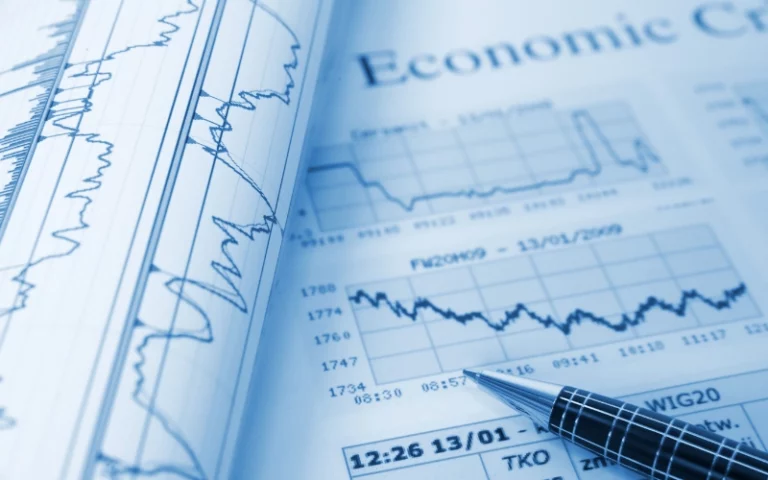Heating oil plays a crucial role in both residential and commercial sectors, particularly in regions with colder climates. It is a refined petroleum product used extensively for space heating. The market for heating oil is complex and influenced by a variety of factors, both domestic and international.
This commodity’s significance goes beyond just being a source of heat. It is an indicator of economic health and has far-reaching implications on global energy policies. The heating oil market is subject to fluctuations, making its pricing a subject of interest for consumers, businesses, economists, and policymakers alike.
Understanding the dynamics of heating oil prices involves analyzing historical trends and recognizing the multitude of factors that contribute to its cost. From global crude oil prices to local weather patterns, each element plays a part in shaping the market. This article aims to dissect these factors, providing a comprehensive overview of what influences heating oil prices, with a particular focus on the United States market.
In the following sections, we will examine the historical trends of heating oil prices, delve into the key factors that influence these prices, explore regional variations, and discuss the impact of renewable energy and technological advancements. We will also look at forecasting methods and strategies for consumers and businesses to navigate the fluctuating prices.
Table of Contents
Historical Perspective on Heating Oil Prices
The historical trends of heating oil prices reveal a story of volatility influenced by a myriad of factors ranging from geopolitical events to technological advancements. This volatility not only affects consumers and businesses but also reflects broader economic and political dynamics.
Historical Price Trends
The pricing of heating oil has historically been closely tied to the fluctuations in crude oil prices. As a derivative of crude oil, any change in the latter’s price directly impacts the cost of heating oil.
Over the decades, there have been significant shifts in heating oil prices. For instance, the oil crises in the 1970s caused a dramatic spike in prices due to supply shortages.
In contrast, advancements in oil extraction technologies, such as fracking, have in more recent years led to an increase in oil supply, contributing to lower heating oil prices.
Additionally, the deregulation of the oil market in the late 20th century introduced more market-driven pricing, leading to increased competition and price fluctuations.

Major Historical Events Influencing Prices
Geopolitical Events: Wars, conflicts, and political instability in major oil-producing regions, like the Middle East, have historically led to significant disruptions in oil supply, causing price spikes.
Economic Crises: Global economic downturns, such as the 2008 financial crisis, have led to decreased demand for oil, subsequently lowering heating oil prices.
Technological and Policy Shifts: The adoption of more efficient oil extraction methods and the introduction of environmental policies have both impacted supply levels and public demand for heating oil.
Weather-Related Events: Severe weather conditions, particularly in key consuming regions like the Northeastern United States, have led to short-term demand spikes and subsequent price increases.
Understanding these historical trends provides a foundation for analyzing current heating oil prices. It highlights the interconnectedness of global events and market dynamics in shaping the heating oil landscape. The next sections will delve into the specific factors that continue to influence heating oil prices in today’s market.
Key Factors Affecting Heating Oil Prices
Heating oil prices are influenced by a complex interplay of global and local factors. Understanding these can provide insight into market fluctuations and help predict future trends.
Crude Oil Prices
Global Oil Supply and Demand Dynamics: The fundamental driver of heating oil prices is the global market for crude oil. This is influenced by OPEC’s production decisions, new oil field discoveries, and extraction technologies. Supply disruptions due to political instability or natural disasters can lead to price spikes.
Geopolitical Events and Stability in Oil-Producing Regions: Political events in oil-rich countries, such as wars or regime changes, can cause significant fluctuations in global oil supply, thereby impacting heating oil prices. The stability of these regions is, therefore, a critical factor.
Seasonal Demand Variations
Winter Heating Season Impact: Demand for heating oil peaks during the winter, especially in colder regions. This seasonal surge often leads to higher prices during the colder months.
Weather Patterns and Predictions: Long-range weather forecasts influence heating oil prices. A predicted harsh winter can lead to increased demand in anticipation, driving up prices.

Political and Economic Policies
Government Regulations and Taxes: Environmental regulations can affect how heating oil is produced and used, impacting costs. Taxes and subsidies on energy also play a significant role in determining final prices.
Economic Sanctions and Trade Policies: Sanctions against oil-producing countries or changes in trade policies can restrict supply sources, affecting global and domestic prices.
Currency Fluctuations
Impact of the U.S. Dollar on Global Oil Trade: Since global oil trade is predominantly conducted in U.S. dollars, fluctuations in its value can significantly affect heating oil prices. A stronger dollar makes oil more expensive in other currencies, potentially reducing global demand.
Exchange Rate Volatility: Exchange rate fluctuations can impact the cost of importing oil, thus influencing domestic heating oil prices.
Refining and Distribution Costs
Refinery Capacity and Maintenance: The availability and capacity of refineries to process crude oil into heating oil can impact supply. Maintenance shutdowns or upgrades can temporarily reduce the supply.
Transportation and Storage Infrastructure: The logistics of transporting and storing oil, including pipeline availability and shipping costs, contribute to the final price of heating oil.
Market Speculation and Investment Activity
Commodities Trading and Futures Markets: Speculators and investors in oil futures markets can impact prices. Their expectations of future prices can lead to price fluctuations.
Investor Behavior and Market Sentiment: The overall sentiment in financial markets can influence heating oil prices. Positive economic forecasts can drive prices up, while negative news can drive them down.
These factors collectively influence the heating oil market, making price prediction a challenging task. The interdependence of these elements means that a change in one area can have ripple effects across the entire market. In the next sections, we will explore regional variations in heating oil prices and the impact of renewable energy and technological advancements on this market.
Regional Variations in Heating Oil Prices
Heating oil prices are not uniform across different regions; they vary significantly due to a variety of local factors. Understanding these regional differences is crucial for consumers and businesses in different areas.

Regional Supply and Demand Balances
Local Consumption Patterns: In regions with harsher winters, like the Northeastern United States, the demand for heating oil is typically higher, which can lead to higher prices.
Availability of Local Resources: Areas closer to oil refineries or with better access to crude oil supply (such as coastal regions) might experience lower prices due to reduced transportation and distribution costs.
Distribution Network and Logistics
Transportation Infrastructure: The efficiency of the transportation network for delivering heating oil, including pipelines, trucking routes, and storage facilities, significantly affects regional prices. Remote or difficult-to-access areas may face higher prices due to the added logistics costs.
Storage Capacity: Regions with larger storage capacities can stockpile heating oil, which can help stabilize or lower prices during peak demand periods.
Regional Policies and Taxation Differences
State and Local Taxes: Different states and localities impose varying levels of taxes on heating oil, which can directly impact the final price for consumers.
Environmental Regulations: Some regions may have stricter environmental regulations regarding heating oil, which can affect production costs and, ultimately, retail prices.
Competition with Other Heating Sources
Availability of Alternatives: In regions where natural gas, electricity, or renewable energy sources are more readily available or cheaper, the demand for heating oil might be lower, potentially affecting prices.
Infrastructure for Alternative Heating: The extent of infrastructure development for alternative heating sources in a region can influence heating oil prices. If a significant investment is made in alternatives like natural gas pipelines or electric heating systems, this could decrease the demand for heating oil.
Economic Conditions
Local Economic Health: The overall economic health of a region can impact the demand for heating oil. In economically thriving areas, higher disposable income can lead to increased demand and potentially higher prices.
Industrial and Commercial Demand: Regions with significant industrial or commercial sectors that rely on heating oil can experience different pricing dynamics compared to predominantly residential areas.
Understanding these regional variations is key for consumers and businesses in making informed decisions regarding heating oil purchases and consumption. As we move forward, the next sections will delve into the impact of renewable energy and technological advancements on the heating oil market, along with forecasting and strategies to manage the changing landscape of energy prices.
Renewable Energy and Technological Advancements
The heating oil market is increasingly influenced by the rise of renewable energy sources and advancements in heating technology. These factors are reshaping the energy landscape, with significant implications for the future of heating oil.

Shift to Renewable Energy Sources
Increasing Adoption of Renewables: There is a growing trend towards using renewable energy sources like solar, wind, and geothermal for heating. This shift is driven by environmental concerns, government incentives, and the decreasing cost of renewable technologies.
Impact on Heating Oil Demand: As more households and businesses adopt renewable energy solutions, the demand for heating oil may decrease, potentially leading to lower prices in the long term.
Government Policies and Incentives: Many governments are actively promoting the transition to renewable energy through subsidies, tax incentives, and regulations, which can accelerate the decline in heating oil usage.
Technological Improvements in Heating Systems
Advancements in Efficiency: New heating technologies are becoming more efficient, reducing the overall amount of heating oil needed for residential and commercial heating.
Hybrid Heating Systems: The development of hybrid systems that combine traditional oil heating with renewable energy sources can lead to more efficient use of heating oil and reduce dependence on it.
Smart Heating Technologies: The integration of smart home technologies in heating systems allows for better energy management, potentially reducing the consumption of heating oil.
Long-Term Impacts on Heating Oil Demand
Changing Consumer Preferences: As awareness about environmental issues grows, consumers are increasingly preferring greener alternatives to heating oil.
Potential for Technological Disruption: Breakthroughs in renewable energy technologies or significant improvements in energy storage could disrupt the heating oil market, leading to decreased demand.
Economic Viability of Heating Oil: As renewable energy sources become more cost-competitive, the economic viability of heating oil as a primary heating source could be challenged.
The transition towards renewable energy and the adoption of new technologies represents a pivotal change in the heating oil market. While these developments might reduce the reliance on heating oil in the long run, they also offer opportunities for the industry to innovate and adapt. In the subsequent sections, we will explore how heating oil prices are forecasted and what strategies consumers and businesses can employ to navigate these changes.
Forecasting Heating Oil Prices
Predicting heating oil prices involves analyzing a multitude of variables and market trends. Reliable forecasts are essential for consumers, businesses, and policymakers for planning and decision-making.
Tools and Models Used in Price Forecasting
Historical Data Analysis: By examining past trends in heating oil prices and their correlations with various factors (like crude oil prices and economic indicators), analysts can identify patterns to inform forecasts.
Economic and Statistical Models: These models integrate various economic indicators, such as GDP growth, inflation rates, and energy consumption patterns, to predict future price movements.
Geopolitical and Environmental Monitoring: Keeping a close eye on global events, political stability in oil-producing countries, and environmental policies can help predict changes in supply and demand.
Role of Government and Industry Reports
Energy Information Administration (EIA) Reports: The EIA provides regular updates and forecasts on energy prices, including heating oil, which are widely used as a reference in the industry.
International Energy Agency (IEA) Outlooks: The IEA’s reports offer insights into global energy trends, policies, and their potential impact on heating oil prices.
Market Research by Energy Companies: Energy companies conduct their own market analysis and share forecasts, contributing additional perspectives to understanding price trends.
Challenges in Accurate Forecasting
Unpredictability of Geopolitical Events: Sudden political events or conflicts in key oil-producing regions can abruptly alter market dynamics, making accurate predictions challenging.
Technological and Policy Shifts: Rapid advancements in technology or unexpected changes in energy policies can significantly impact supply and demand, complicating forecasting efforts.
Market Speculation and Investor Behavior: The futures market and investor sentiment can sometimes lead to price fluctuations that are difficult to predict based solely on supply and demand fundamentals.
Despite these challenges, forecasting remains a critical tool for managing the risks associated with volatile heating oil prices. Accurate predictions can help consumers and businesses make informed decisions, such as when to buy heating oil or invest in alternative heating solutions.
In the next section, we will discuss strategies that consumers and businesses can employ to navigate the fluctuating prices of heating oil, including hedging techniques, energy efficiency measures, and exploring alternative heating options.

Strategies for Consumers and Businesses
Navigating the fluctuating heating oil market requires strategic planning and informed decision-making. Consumers and businesses can adopt various strategies to mitigate the impact of price volatility and manage their heating costs more effectively.
Hedging and Price Lock Programs
Fixed Price Programs: Some suppliers offer the option to lock in a fixed price for heating oil for a set period. This can protect consumers from price spikes during high-demand seasons.
Price Cap Plans: These plans set a maximum price per gallon, while allowing consumers to benefit if market prices fall.
Pre-Buy Options: Purchasing heating oil in advance during off-peak seasons when prices are typically lower can be a cost-effective strategy.
Energy Efficiency and Conservation Measures
Upgrading Heating Systems: Investing in more efficient boilers or furnaces can reduce the amount of heating oil used, leading to long-term savings.
Regular Maintenance: Routine maintenance of heating systems ensures they operate efficiently, using less oil and thereby reducing costs.
Insulation and Weatherproofing: Improving home insulation and sealing drafts can significantly lower heating requirements, diminishing reliance on heating oil.
Alternative Heating Solutions
Exploring Renewable Options: Installing solar panels or geothermal systems can reduce dependence on heating oil, though initial investment costs can be high.
Hybrid Heating Systems: Combining traditional oil heating with renewable sources can provide a balance between cost and environmental considerations.
Switching to Other Fuels: In some cases, switching to natural gas or electricity for heating might offer a more cost-effective and stable alternative.

Budgeting and Financial Planning
Creating a Heating Oil Budget: Estimating annual heating oil needs and budgeting accordingly can help consumers manage expenses throughout the year.
Government Assistance Programs: In some regions, government programs are available to help low-income households with their heating oil expenses.
Staying Informed and Adaptable
Monitoring Market Trends: Keeping abreast of market trends and price forecasts can help consumers and businesses make timely decisions about purchasing and conservation.
Flexibility in Energy Usage: Being adaptable in energy consumption, such as reducing usage during peak pricing periods, can lead to cost savings.
By employing these strategies, consumers and businesses can not only manage their heating oil costs more effectively but also contribute to a more sustainable and environmentally friendly approach to heating. The final section will provide a conclusion, summarizing the key points and offering insights into the future of heating oil in the context of a changing energy landscape.
Summary
The heating oil market is a dynamic and complex sector influenced by a myriad of factors ranging from global oil prices to local weather conditions. Understanding these factors is crucial for consumers, businesses, and policymakers to navigate the market effectively.
Summary of Key Factors Influencing Heating Oil Prices: The price of heating oil is primarily driven by global crude oil prices, which are affected by supply and demand dynamics, geopolitical stability, and economic policies. Seasonal variations, particularly in colder regions, significantly impact demand and prices. Additionally, technological advancements, renewable energy trends, and regional policy differences play a crucial role in shaping the heating oil market.
Future Outlook for the Heating Oil Market: The heating oil industry is at a crossroads, with renewable energy sources and technological innovations increasingly impacting market dynamics. The shift towards more sustainable and efficient energy sources is likely to continue, potentially reducing the dependence on heating oil in the long run. However, heating oil is expected to remain a significant energy source, especially in regions with limited access to alternatives.
The Importance of Being Informed for Consumers and Businesses: For consumers and businesses, staying informed about market trends and price forecasts is essential for effective decision-making. Adopting strategies such as price lock programs, energy efficiency measures, and exploring alternative heating solutions can help mitigate the impact of price volatility. Furthermore, understanding and adapting to the evolving energy landscape is crucial for long-term sustainability and cost management.
In conclusion, while the heating oil market continues to face challenges and undergo changes, it remains a vital component of the energy mix, particularly in colder climates. By staying informed and proactive, consumers and businesses can navigate this fluctuating market and prepare for future shifts in the energy sector.
References
To ensure a comprehensive understanding of the heating oil market and its dynamics, a variety of sources can be consulted. These references provide valuable insights and data that support the analysis presented in this article.
Industry Reports and Data Sources
Energy Information Administration (EIA): Offers extensive data and reports on heating oil prices, production, and consumption trends.




